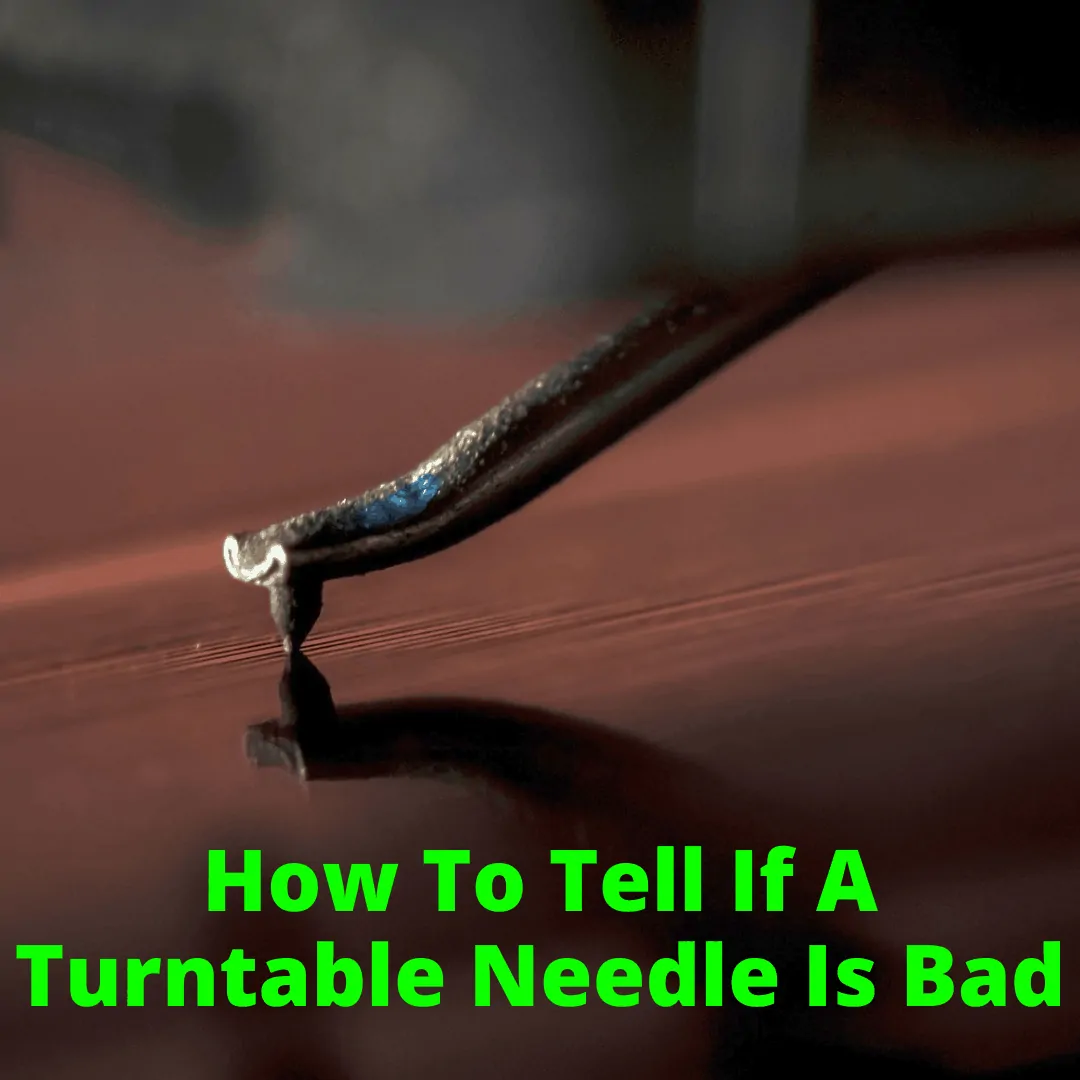
A number of issues could be causing this.
Among them is a bad needle.
If your stylus has gone bad, we strongly recommend replacing it immediately, before it does permanent damage to your records.
But how do you know if a turntable needle is bad?
Luckily, it’s generally pretty easy to detect. Read on to learn several ways you can figure out if you have a bad stylus on your hands.
Contents
How To Tell If A Turntable Needle Is Bad
The following methods tips will help you determine if your record player stylus is bad and needs to be replaced. We usually rely on several, or even all, of these methods together.
Visible Damage
A visual inspection to determine if your needle or cartridge needs to be replaced is usually the first and most obvious step.
Normally your needle will appear to have a sharp point in the middle of the assembly that sticks out of your cartridge. You may need a magnifying glass if you do not have the eyes you once did (like me).
If this sharp point has become visibly dull and looks more like a raised pimple than a sharp tip, it is too dull and should be replaced.
The record player cartridge itself can sometimes become damaged as well, in extreme cases, if there was an accident and the turntable was dropped, or an over-adventurous cat jumps up on it (bad kitty!).
If the cartridge is not sitting flush against the tone arm assembly and is crooked or off kilter, it may be damaged on the inside as well. I also have an article detailing how to tell if a turntable cartridge is bad.
Treble Is Lacking On Playback Of Records
The first thing I notice when my stylus starts to go, is that the treble starts to dip. I have a few records that I have listened to hundreds of times and I know exactly how the high end should sound. When I play my ‘reference’ records I can always tell if the treble is going away.
When this happens, I know it is time to get a new needle.
Pro Tip
We recommend having a few records you know intimately to use as reference records. This makes determining how the needle sounds much easier!
In case you were wondering (you probably weren’t but I am going to tell you anyway), my reference records are “Abby Road” and “Rubber Soul” by the Beatles. I use the remastered reissues since the OG pressings already sound bad because they are over 50 years old!
Overall Thin Sounding Records
Do not mistake thin sounding to mean the same thing as lacking treble. These are completely different symptoms. When a record sounds thin it resembles an AM radio sound. There is not much bass or dynamic range. It sounds compressed and just generally bad.
This can either mean:
- Your record has been played too much
- The stylus is going bad
To determine which of those 2 situations is happening, look closely at your record.
If the grooves seem wider and deeper than other records in your collection, it is likely the record has been played to death. If the grooves look good but the sound is still thin or ‘tinny’ then it is needle replacement time.
Scratchy Scruffy Sound Syndrome
This is blatant and extremely hard to miss. If your record sounds scratchy and like sandpaper is rubbing on it, either the needle needs to be adjusted or it is going bad and should be replaced.
All types of turntable needles are attached to metal strips that hold the tiny little needle point in place. This metal strip provides two functions:
- It holds the needle in place (duh)
- It acts as a kind of springy shock absorber to react to the peaks and valleys of the grooves
This metal strip can, over time, lose its spring. This means the entire weight of the tonearm goes straight into the stylus assembly, resulting in too much weight directly on the needle against the record. The result is an unmistakable sound of scratchiness.
This sound is almost identical to the sound of too much dust or debris on the needle. If this sound occurs, clean the needle with your brush. If the sound continues, your needle assembly is out of bounce and needs to be replaced or adjusted.
Refer to your cartridge’s manual if you suspect it just needs adjustment. Keep in mind some cartridges cannot be adjusted safely, and replacement is the only option.
Why You Should Always Replace A Bad Needle
Bad Needles Will Damage Your Vinyl
When your needle is no longer a tiny sharp little spike, it has a lot more surface area rubbing on your records. Over time this is how records wear out. If you have rare records or first pressings of classic albums, you definitely want to avoid this!
The nubby needle will widen the grooves and attract more dust and debris. This not only ruins the sound of your records but causes visual scratches that you can never get out.
Visible scratches significantly reduce the resale value of your records. The stylus can also slide out of the groove entirely, which can cause a large scratch across the surface of the record.
Old Damaged Needles Sound Bad
The whole point of listening to vinyl on a good deck is because it sounds amazing. Playing your precious records with an old beat up needle is like putting cheap 20 dollar used tires on your new Ferrari.
What is the point of listening to expensive records if they sound like garbage? To thoroughly enjoy listening to records, do not be a cheapskate! Make sure you have a fresh needle.
Replacing The Stylus
Some cartridges allow for replacing just the stylus, while some make you replace the whole cartridge (some cartridges have the needle attached). Personally, I prefer to replace the whole cartridge anyway.
If you are on a tight budget, you may be able to replace only the needle. Refer to your user manual to determine which type of cartridge you have. This is a decent generic video that has all the steps below.
- Remove the old needle. If you have a cartridge carrier that is easily removeable, take it off. If not, you can usually just pull out the needle assembly by hand.
- Write down the model number of your cartridge / needle.
- Order your replacement needle and or cartridge. You can find many replacement models on Amazon or specialty shops. A quick Google search will give you many options.
- If only replacing the needle you can simply pull it out by hand in most cases. If it is a bit hard to remove you can use small needle nosed pliers
- Insert the new needle. Refer to the instruction manual for specifics.
- Re-adjust and align the new needle and or cartridge based on the manufacturer’s instructions.
That is all there is to it! Your specific model may require some additional or slightly modified steps, but this overview covers the basics.
Detecting A Bad Stylus: Final Thoughts
Record player needles all wear down eventually. Playing scratched records might damage the needle a bit faster, but the effect is minimal. Time is what does it.
Once a needle is bad, you don’t want to keep using it, since it could damage your precious records. Use the tips above to ensure you always recognize a bad needle before it destroys a valuable album. And then replace that needle!
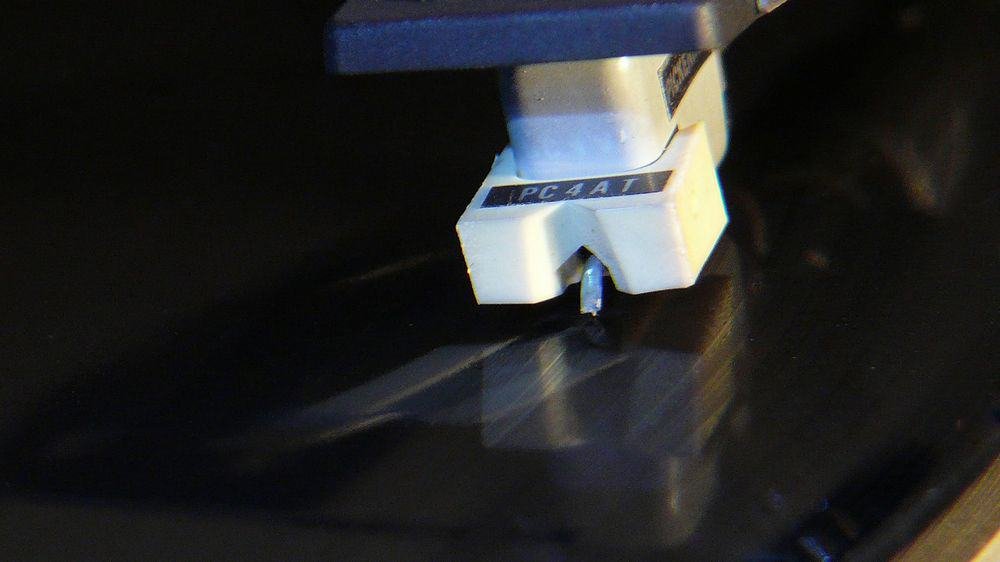
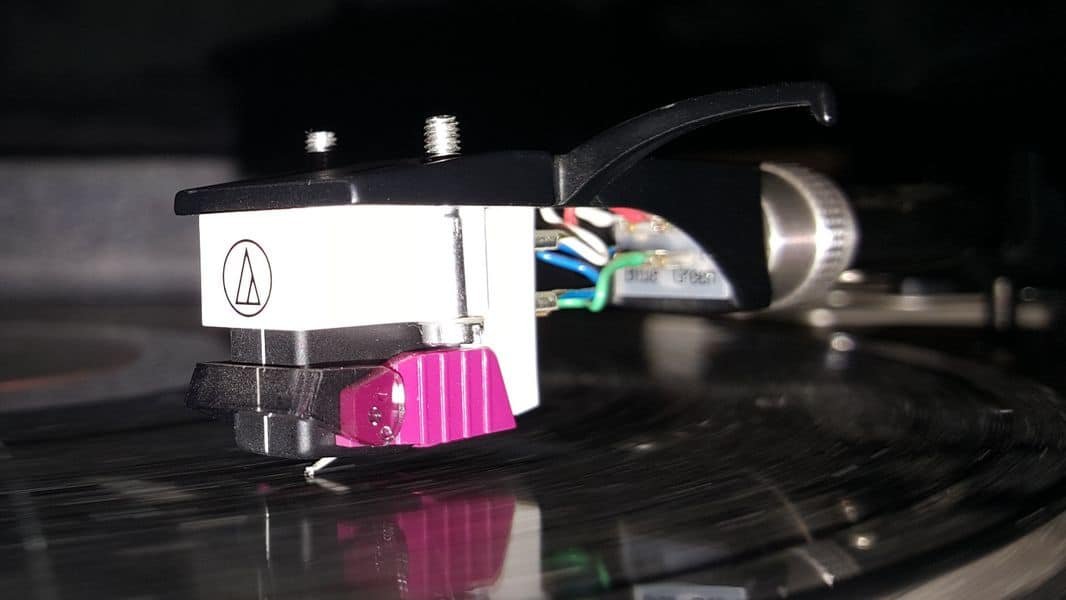
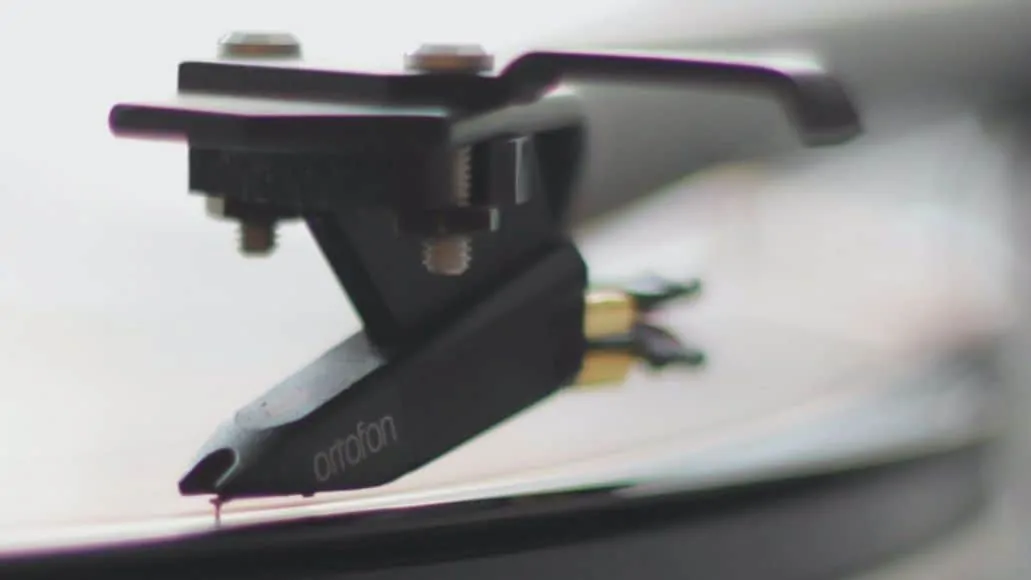
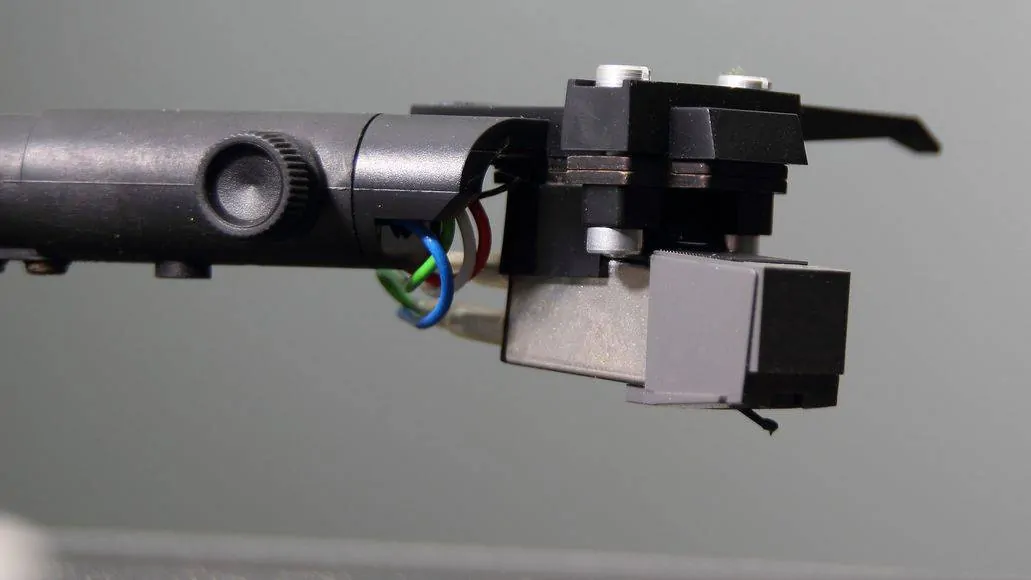
Thank you for this advice. It is really great advice and very helpful. I don’t have a manual but I know now what to look for and that there might be a replacement available if I need it. But to know what to look for is great! Thanks.
I own a ATLP 120X but use a AT95e and an Audio Technica Cartridge Head shell. I pay records on a regular basis and change the stylus regularly around every 300 albums, My stylus tracks at 2.5 g so I get a lot of plays out of one cartridge.
Have not had a worn stylus yet…..
My Technics SL-QD33 was factory set at 1.25g and i just started “skating’ . My Stylus is an AT 2002 from way back. However, hardly used due to (insert reasons here)….. anyway, I adjusted the weight to about 1.35g and the skating stopped. My 2cents.
My Technics SL-7 turntable doesn’t get used much. Recently, the volume in one speaker is very low while it is fine in the other. This imbalance doesn’t happen when the same receiver is playing CDs or radio. Would a worn needle cause this?
Check your preamp.
Its worth checking/cleaning the rca connector from the turntable to the receiver.
Just years of experience here with this issue: as it is happening, try to unhook and reattach the
RCA cable from the amp on the side that you hear low volume (or unhook and reattach both if you aren’t sure which it is). Also you can try unhooking and reattaching the ground wire from the phono to the amp/receiver. This seems to clear up this problem in my experience. You can also squeeze the RCA plug a little bit so it is sure to connect with the amp tightly. My explanation may not be correct but I think the current from a phono cartridge is very very low so sometimes some sort of artifact in the cord connection (where is doesn’t quite connect as well as it could) or in some part of the thin wire – or some sort of buildup static in the connection with the preamp – acts as a sort of blockage of the tiny current from the phono. Happened more with my old and great Marantz but happens once in awhile with my Yamaha too. Other possibilities are issues in any of the connections from the cartridge to the tone arm all the way to the speakers. Try rubbing a little emery board on all of those pins before running out to get a new cartridge.
The Diamond is not affected by friction with vinyl records, or subjected to any more “weight” when the stylus begins to fail.
Nearing the end of its service life, the weakened stylus can transfer lateral and vertical occilations to the needle that leaves it unable to symetrically read both sides of the groove.
Jason nailed it. A bad needle will distort sound long before it skips.